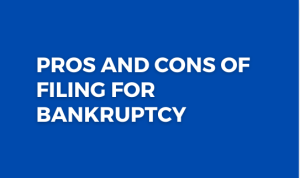Waste products are no longer taken to a landfill to rot there for years, they are singled out and repurposed for another use through the recycling process. Recycling involves converting waste products into a reusable form. It is one of the best solutions to reduce the waste products and their impact on the environment.
Recycling can help in reducing energy consumption, air and water pollution, and consumption of raw materials but also has various disadvantages.
Pros:
1. Environmental conservation: Re-use of papers made from the cutting of certain trees reduces deforestation. This ensures papers are only produced from sustainable trees and preserve the forest.
2. Reduce air and water pollution: The major source of water pollution is from the waste products from factories. Recycling these waste products like cans and plastic can reduce pollution and also it promotes proper disposal of plastic materials.
3. Limit waste in landfills: Recycling reduces dumping of non-biodegradable materials in the landfills. This reduces overflowing and other environmental problems like contamination of water in the surrounding area.
4. Reduce energy consumption: Recycling waste products like paper require less energy compared to processing raw materials to finished product. Therefore recycling reduces energy consumption.
5. Spreads environmental awareness: There is a continuous awareness of recycling and people are educated on the importance of recycling and its environmental impact. This makes people eco-conscious and can participate in an eco-friendly environment.
6. Global warming mitigation: Burning of plastic materials and other waste material can lead to the production of gases that contribute to global warming. To mitigate this problem, recycling is done to reduce the burning process.
7. Results in the sustainable use of resources: Recycling ensures the existing resources are used sensibly and are sustainable. This ensures natural resources are left for future exploitation.
8. Profitable if properly implemented: A properly implemented recycling program can result in the generation of revenue. Increasing recycling volume results in more profits.
9. Includes organic materials: Recycling from leftover foods and other garbage thrown into a trash can contain organic compounds.
10. Save and make money: There are people who collect plastic bottles and other trash to sell for recycling. They not only save the environment but also make money. Recycled materials cost less money.
Cons:
1. Results in pollutants: Some toxins and chemical products from plastic materials like spray cans and lead paint contain chemicals and other contaminated pollutants which can harm the environment.
2. Recycling costs: Although the recycling process is eco-friendly, the processing cost may be more than dumping the garbage in a landfill. The process is also labor intensive with low pay.
3. More pollution and energy consumption: To recycle large tons of garbage, you need to transport the waste products, sort it out, clean and have the waste material be processed in separate factories. This process needs a lot of energy and the by-products may result in air pollution.
4. Less quality material: There is no guarantee you will get quality and safe products. Some recycled products if not properly cleaned may contain toxic chemicals that were present from the original material.
5. High upfront costs: You need to establish a recycling protocol which requires high initial capital for equipment needed, factory upgrades, and also trucks to haul the recycled material.
6. Unsafe recycling sites: Waste materials are transported and recycled somewhere else and the heaps of trash can result in the spread of bacteria and diseases to people handling the processing of those materials.
7. Not widespread on large scale: Recycling is just a small part of the long-term success in reducing pollution. The recycling process is not widely spread or developed on large scale.
8. Not everything is recycled: Some waste product can be recycled and others cannot even though they are labeled for recycling. Therefore, a lot of unrecycled material still heads to the landfills.
9. Recycling programs still create litter: The curbside program or the recycling truck always lives behind some litter which is scattered everywhere.
10. Profits are based on supply and demand: The market for demand and supply of recycled materials is very volatile and this affects investors willing to venture into this type of business.




Recycling essays are stereotypically categorized in two broad sections.